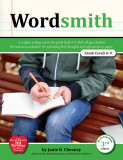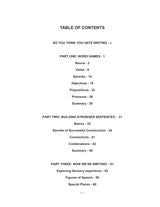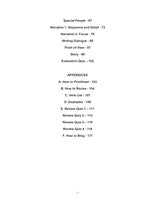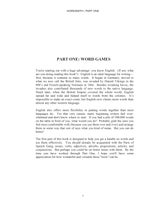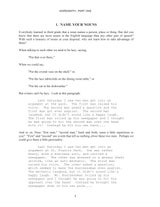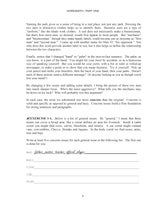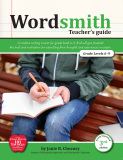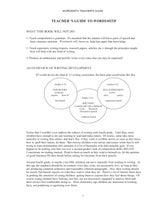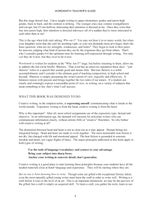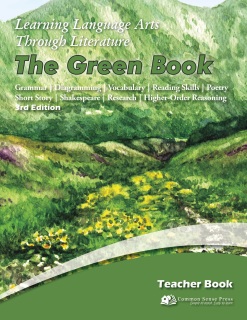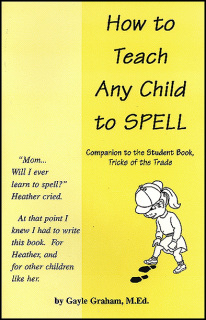- Language Arts
- >
- Wordsmith
- >
- Wordsmith 3rd Edition - 6th through 9th Grade Skills
Wordsmith 3rd Edition - 6th through 9th Grade Skills
SKU:
$8.00
8
18
$8.00 - $18.00
Unavailable
per item
6th through 9th Grade Skills
Get the e-book here
For more information about Wordsmith and to contact the author directly, visit the new Wordsmith website.
Get the e-book here
For more information about Wordsmith and to contact the author directly, visit the new Wordsmith website.
Wordsmith
6th - 9th Grade Skills
-
Product Description
-
Sample
-
Reviews
-
Scope and Sequence
<
>
For sixth grade skills and up, Wordsmith is the perfect companion to Learning Language Arts Through Literature. For young people who want to improve their writing skills, step-by-step instructions are provided that will help any writer improve his techniques.
The introduction provides a brief review of grammar followed by instruction on building stronger sentences, exercise in descriptive and narrative writing, creating dialogue, story writing, and writing from a particular point of view. Plus, the essential skills of every good writer, practice in proofreading and revising.
The third edition contains updated information, additional material, and more illustrations.
For more information about Wordsmith and to contact the author directly, visit the new Wordsmith website.
The introduction provides a brief review of grammar followed by instruction on building stronger sentences, exercise in descriptive and narrative writing, creating dialogue, story writing, and writing from a particular point of view. Plus, the essential skills of every good writer, practice in proofreading and revising.
The third edition contains updated information, additional material, and more illustrations.
For more information about Wordsmith and to contact the author directly, visit the new Wordsmith website.
Parents who lack confidence in their ability to teach students how to write will appreciate the inexpensive teacher's guide. It includes answers, lesson plans, teaching suggestions, and ideas for expanding lessons.
Cathy Duffy -- 102 Top Picks for Homeschool Curriculum
Weekly plans help foster more structure and more time management skills (perfect for middle school kids!).
Redeemed Reader
Video Reviews
Wordsmith is written for young people who are just beginning to explore their experiences, feelings and responses. The purpose of the book is to develop confidence in self-expression, first by learning some basic techniques of effective writing, and second by discovering that their own experience contains plenty of material to write about. Some of the topics that Wordsmith Apprentice touches upon are addressed more systematically here. Parts One and Two contain exercises and short assignments to reinforce the principles taught. In Part Three, the student moves beyond exercises into longer assignments, developed according to an orderly process of thinking, organizing, writing, evaluating, and re-writing. Every chapter includes a "Just Imagine" exercise or assignment, where the student is encouraged to apply what she has just learned to an imaginary situation.
PART ONE: WORD GAMES
Nouns
Nouns as a major "building block" of language; preferring concrete and specific nouns over general ones; proofreading.
Verbs
Verbs as the other "building block"; action and linking verbs; preferring strong action verbs over weak or linking verbs; using verbs to show emotion.
Adverbs
The function of adverbs; preferring strong verbs over weak verb/adverb combinations
Adjectives
The function and variety of adjectives; the difference between descriptive and qualitative adjectives; over-use of adjectives
Prepositions
The function of prepositions: to turn nouns into modifiers; the flexibility of prepositional phrases
Pronouns
How pronouns are used; the pronoun-antecedent connection; avoiding confusion with pronouns
PART TWO: BUILDING STRONGER SENTENCE
Basic Sentence Structure
Subjects and predicates; fragments
Successful Sentence Construction
Common "weak" constructions and how to avoid them (particularly "it has" and "there is"; sentence transformation techniques; preferring active voice over passive
Making Connections
Coordinating conjunctions; subordinating conjunctions; semi-colons
Combinations
Combining sentences through appositives, relative pronouns, relative clauses, participles and participial phrases
PART THREE: NOW WE'RE WRITING!
Exploring Sensory Experience
The importance of the senses in connecting writer and reader; writing sensory poems
Figures of Speech
What similes, metaphors and personifications are; how they are used
Special Places
The use of sensory impressions in describing a place; first steps in revision
Describing a Person
"Framing" a person at a particular time and place; descriptions of strangers and of people you know well
Narrative Writing I - Sequence and Detail
Telling events in order; the use of sensory images and details
Narrative Writing II - Focus
The importance of narrowing thoughts and impressions to a particular event; finding the focus and holding it; the difference between narrative and summary; writing about personal experiences; advanced revision
Dialogue
What dialogue and how it is indicated; using dialogue to indicate character traits, add interest, and move the narrative along; speech tags and when to use them; interviews; radio plays
Point of View
First, second and third person; imagining and including other points of view in personal narratives
Story
The difference between narrative and plot; basic story structure; re-interpreting personal experience as a story; effective opening sentences and paragraphs
Final assignment: incorporating word choice, strong sentence constructions, effective organization, sensory detail, dialogue, focus, and point of view, shape an incident from your life into a short story.
APPENDICES: How to Proofread; How to Revise; Action Verb List; Student examples; Four Review Quizzes
PART ONE: WORD GAMES
Nouns
Nouns as a major "building block" of language; preferring concrete and specific nouns over general ones; proofreading.
Verbs
Verbs as the other "building block"; action and linking verbs; preferring strong action verbs over weak or linking verbs; using verbs to show emotion.
Adverbs
The function of adverbs; preferring strong verbs over weak verb/adverb combinations
Adjectives
The function and variety of adjectives; the difference between descriptive and qualitative adjectives; over-use of adjectives
Prepositions
The function of prepositions: to turn nouns into modifiers; the flexibility of prepositional phrases
Pronouns
How pronouns are used; the pronoun-antecedent connection; avoiding confusion with pronouns
PART TWO: BUILDING STRONGER SENTENCE
Basic Sentence Structure
Subjects and predicates; fragments
Successful Sentence Construction
Common "weak" constructions and how to avoid them (particularly "it has" and "there is"; sentence transformation techniques; preferring active voice over passive
Making Connections
Coordinating conjunctions; subordinating conjunctions; semi-colons
Combinations
Combining sentences through appositives, relative pronouns, relative clauses, participles and participial phrases
PART THREE: NOW WE'RE WRITING!
Exploring Sensory Experience
The importance of the senses in connecting writer and reader; writing sensory poems
Figures of Speech
What similes, metaphors and personifications are; how they are used
Special Places
The use of sensory impressions in describing a place; first steps in revision
Describing a Person
"Framing" a person at a particular time and place; descriptions of strangers and of people you know well
Narrative Writing I - Sequence and Detail
Telling events in order; the use of sensory images and details
Narrative Writing II - Focus
The importance of narrowing thoughts and impressions to a particular event; finding the focus and holding it; the difference between narrative and summary; writing about personal experiences; advanced revision
Dialogue
What dialogue and how it is indicated; using dialogue to indicate character traits, add interest, and move the narrative along; speech tags and when to use them; interviews; radio plays
Point of View
First, second and third person; imagining and including other points of view in personal narratives
Story
The difference between narrative and plot; basic story structure; re-interpreting personal experience as a story; effective opening sentences and paragraphs
Final assignment: incorporating word choice, strong sentence constructions, effective organization, sensory detail, dialogue, focus, and point of view, shape an incident from your life into a short story.
APPENDICES: How to Proofread; How to Revise; Action Verb List; Student examples; Four Review Quizzes
Recommended products...
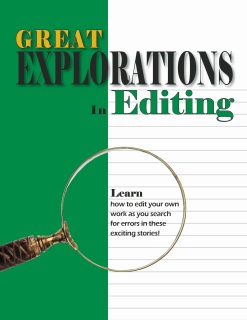
Great Explorations in Editing Series (7th – 9th Grade)
Great Explorations in Editing Series
7th – 9th Grade Skills
Get the e-book here
7th – 9th Grade Skills
Get the e-book here
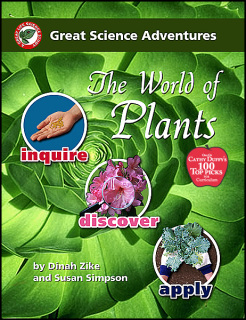
On Sale
On Sale
The World of Plants
Materials Packet - a digital file of the consumable portion from the book


